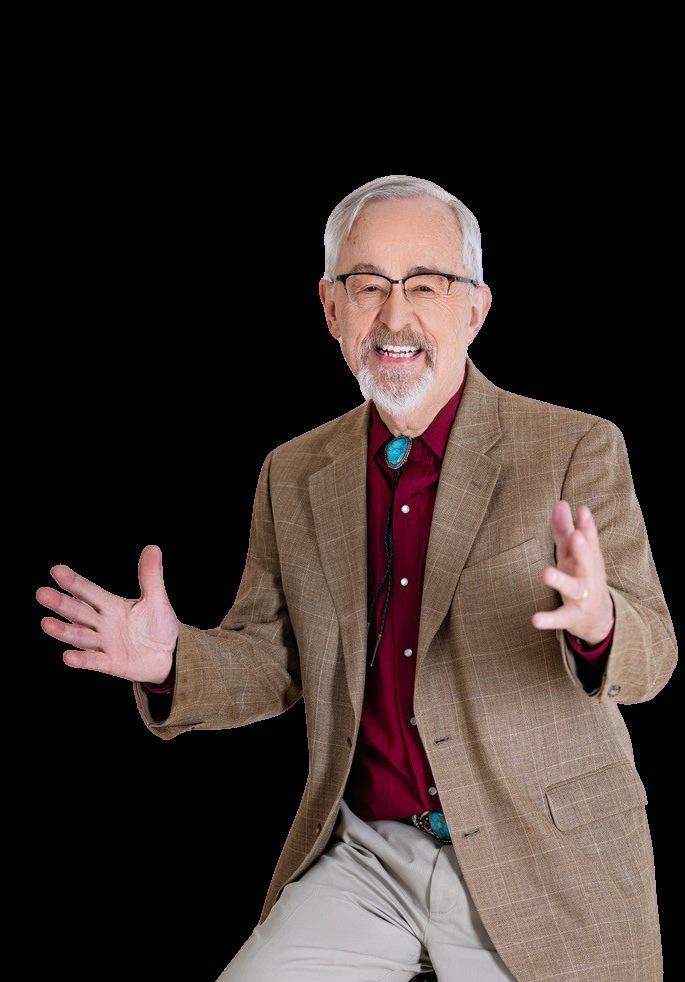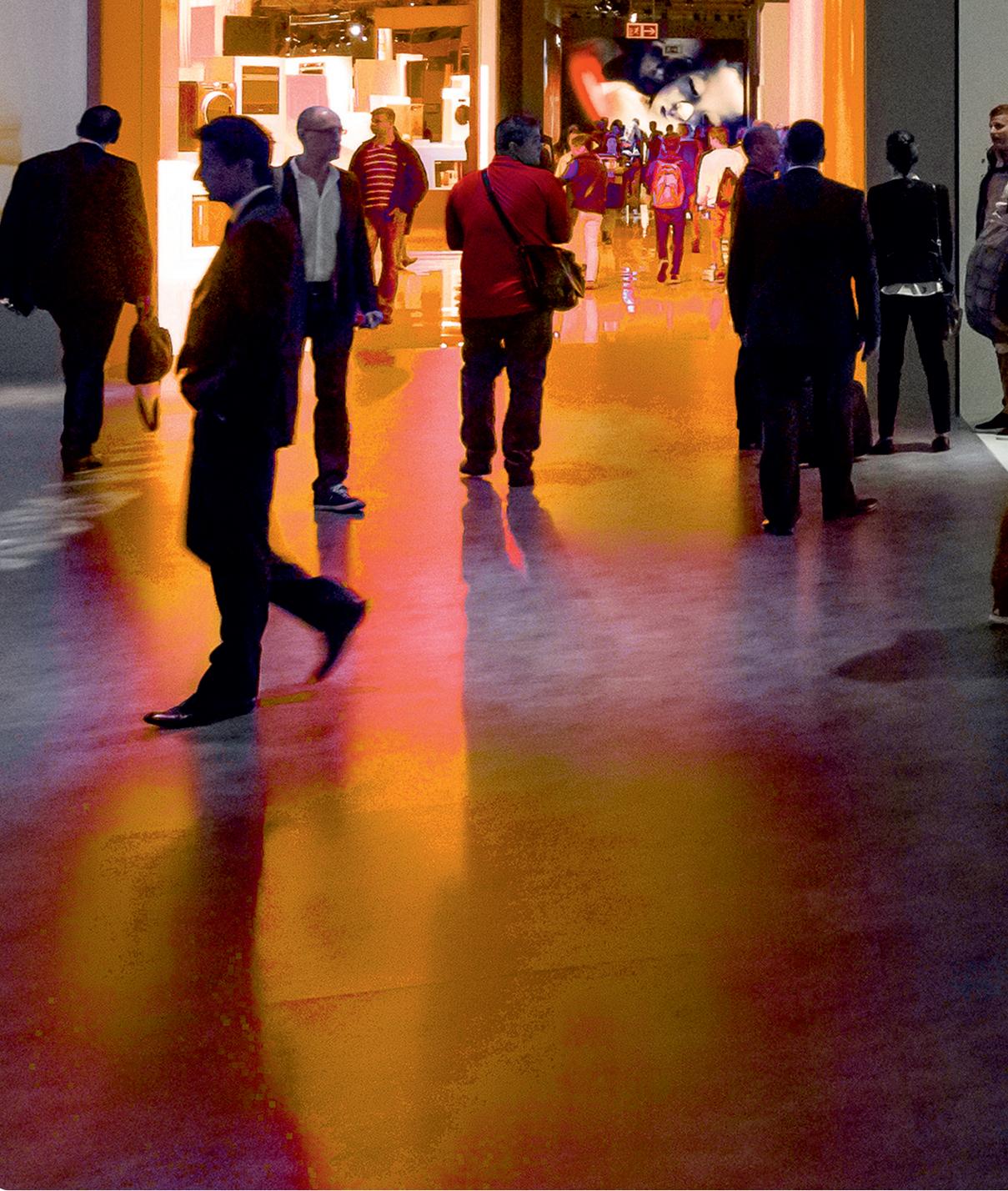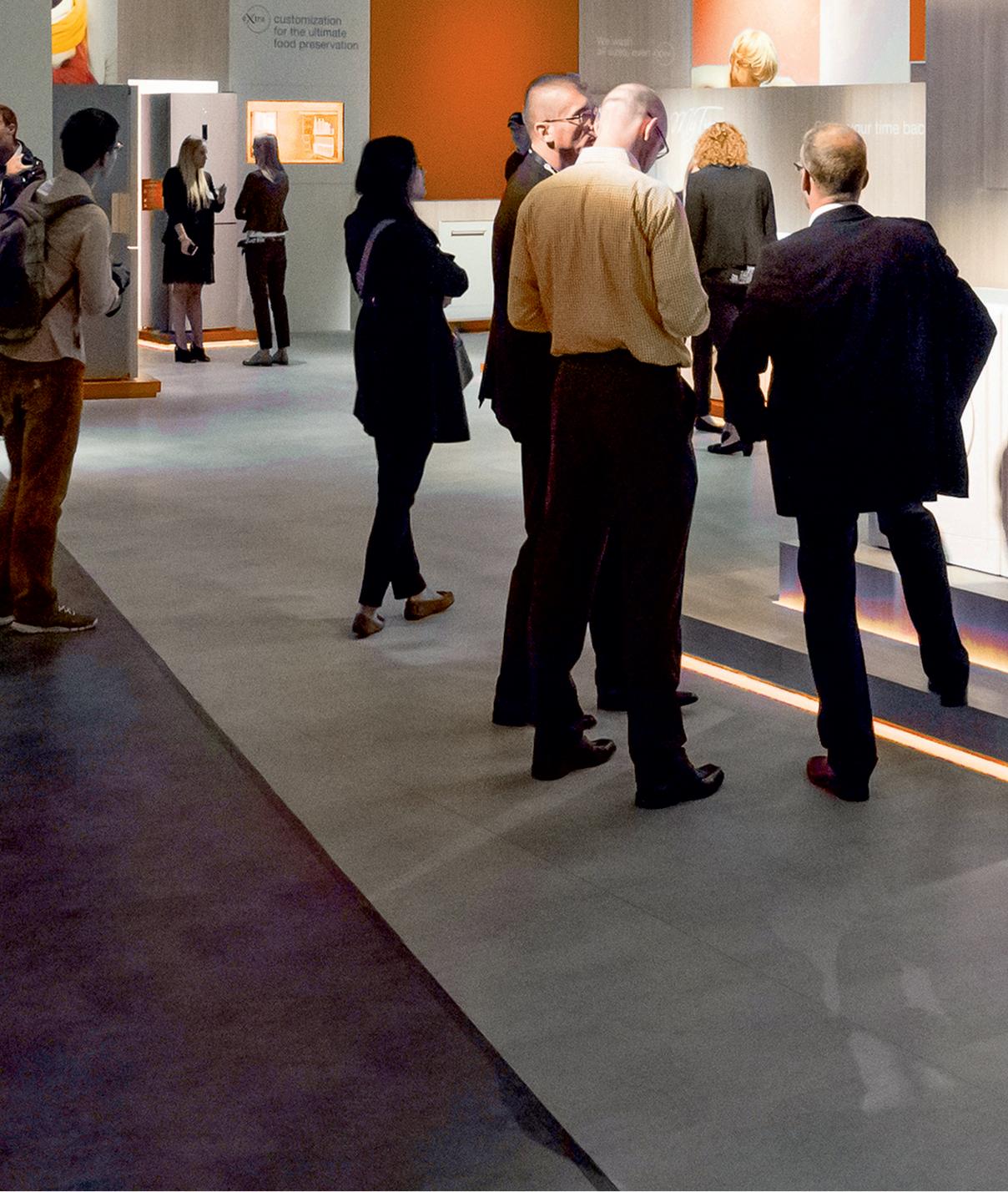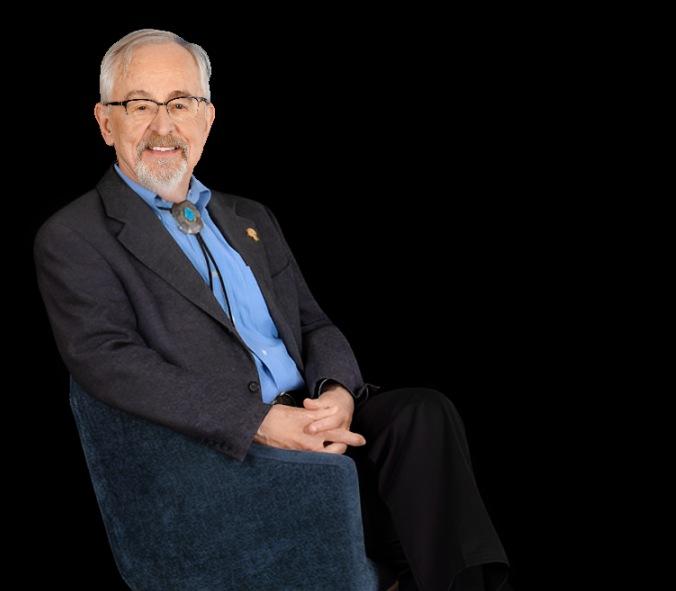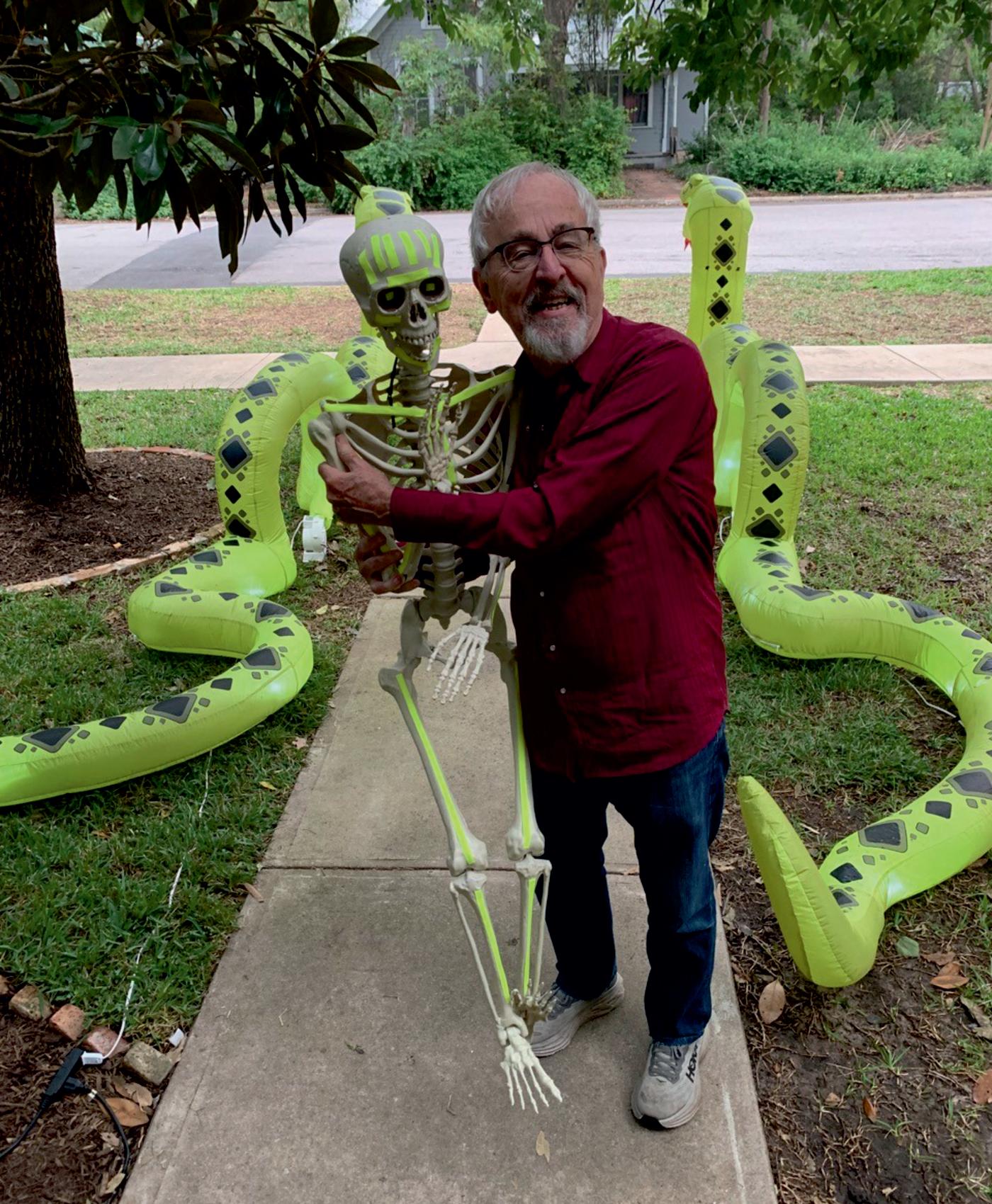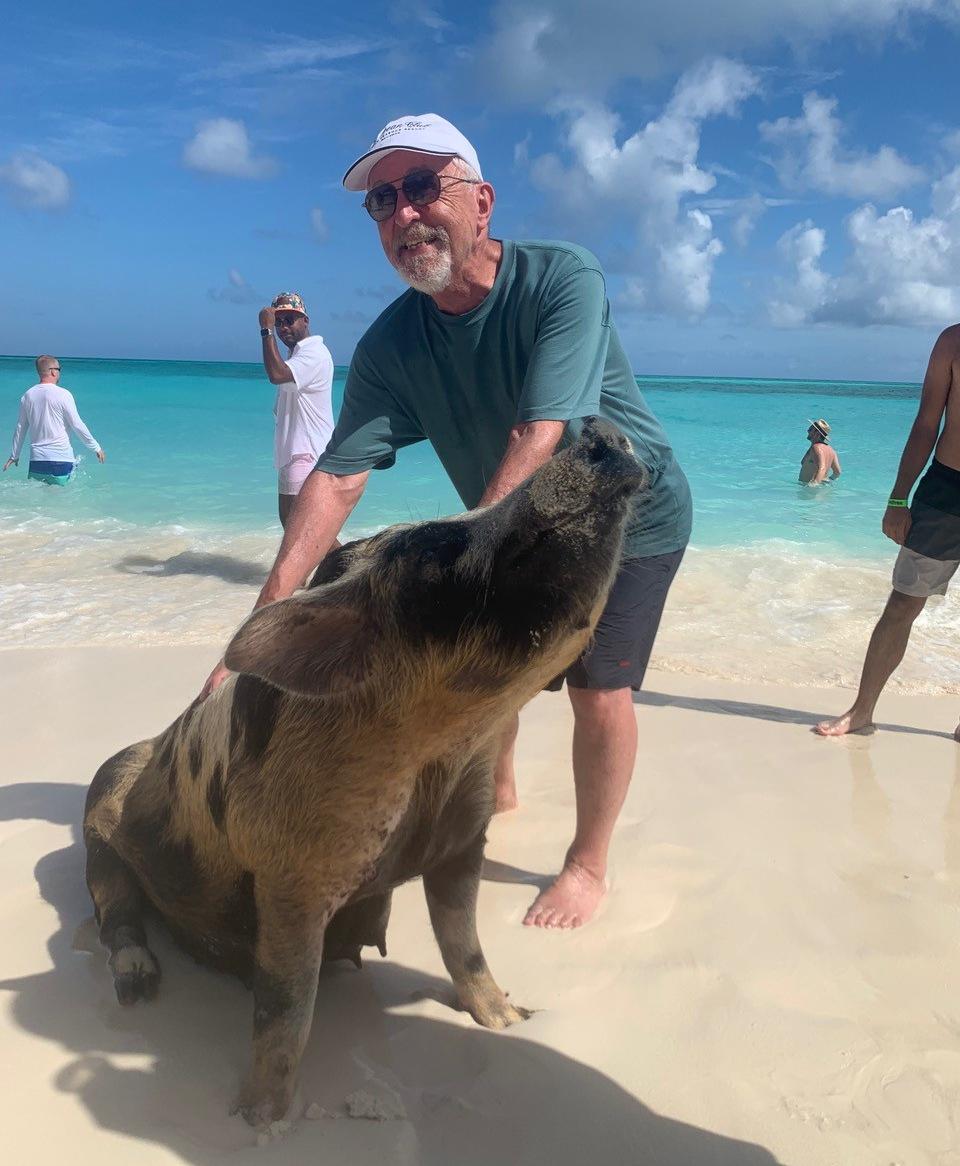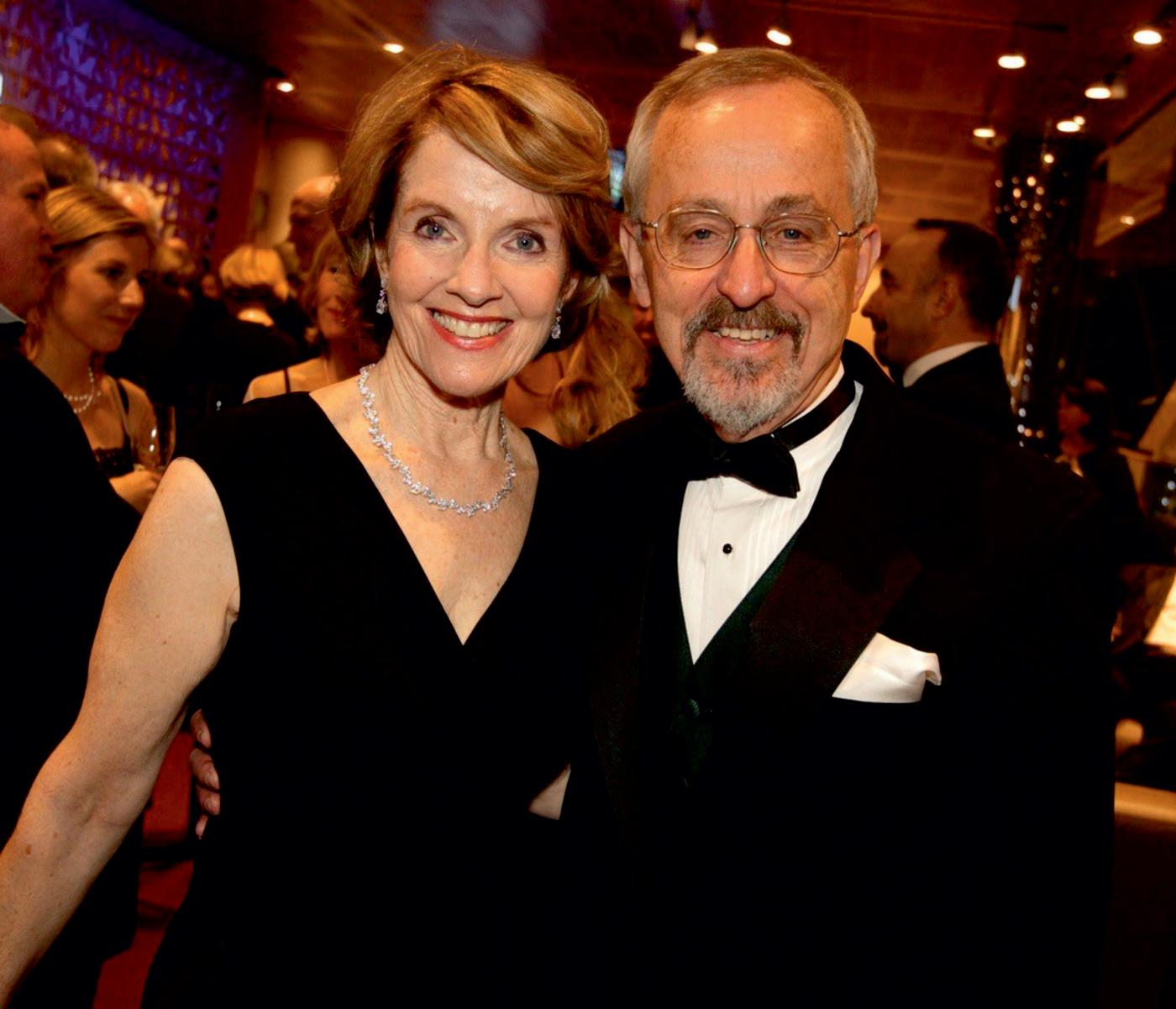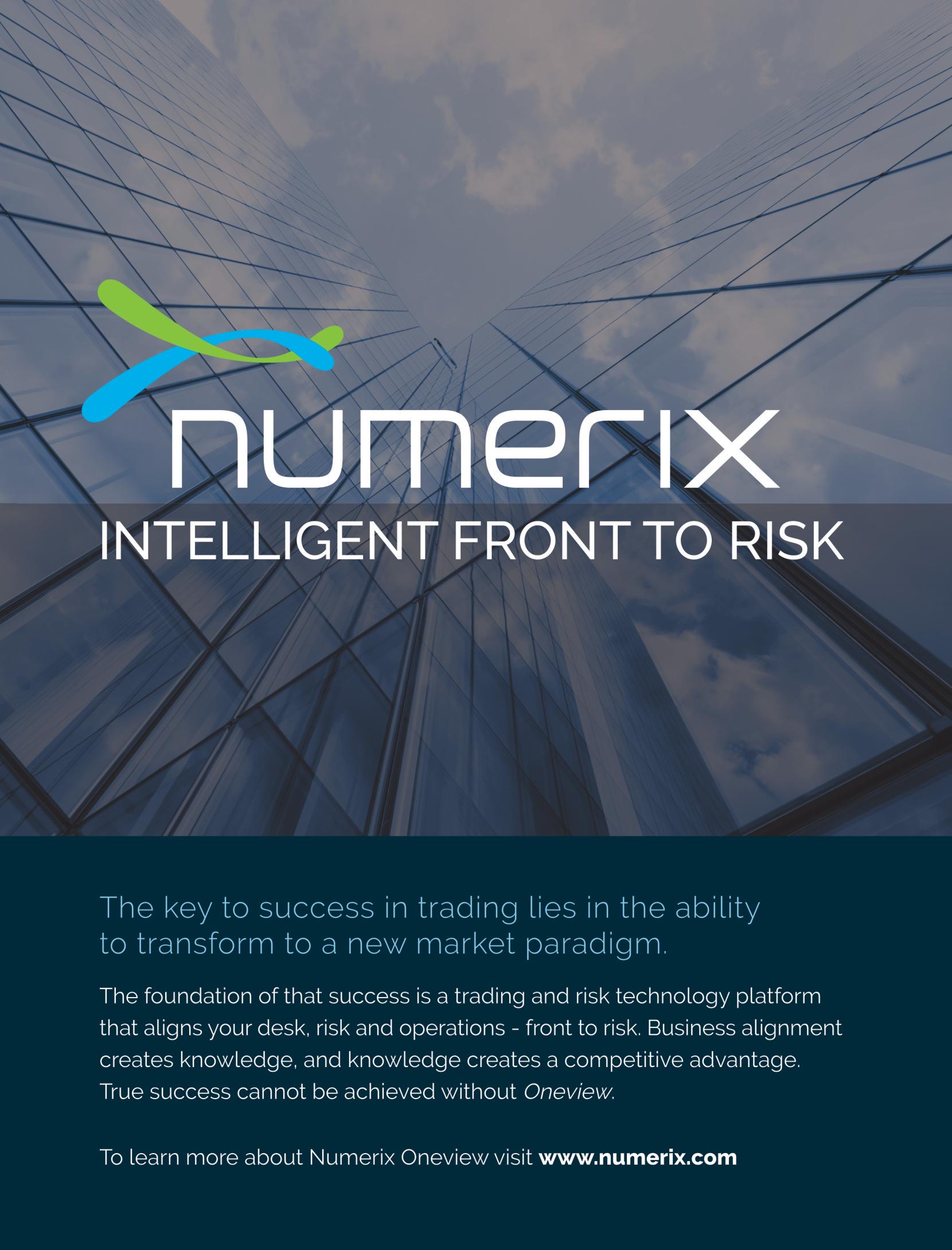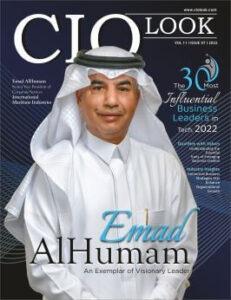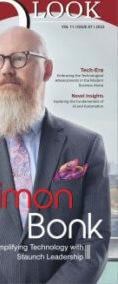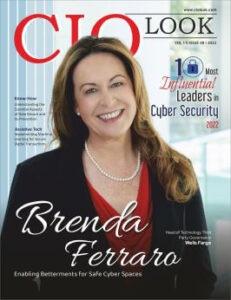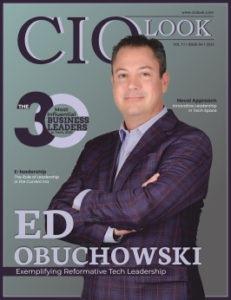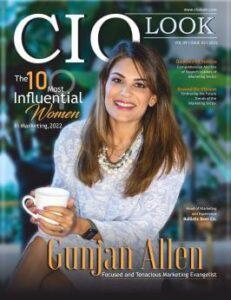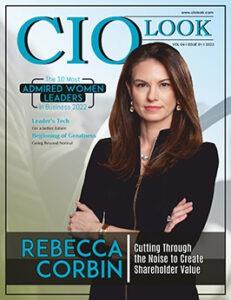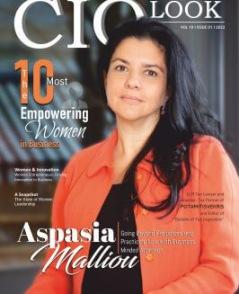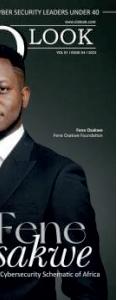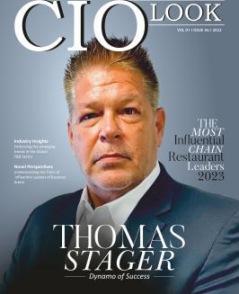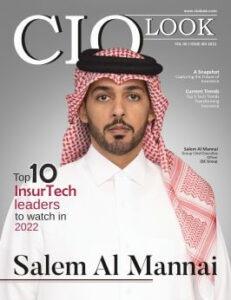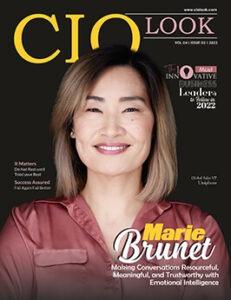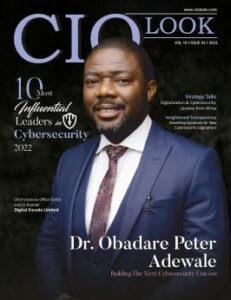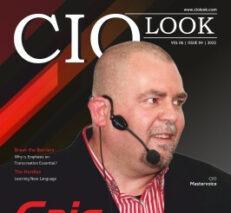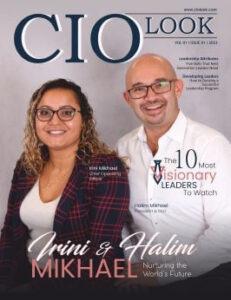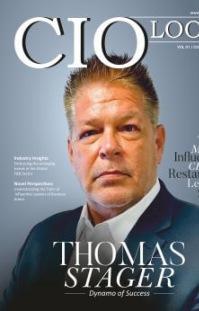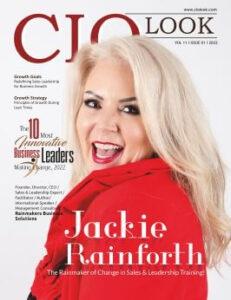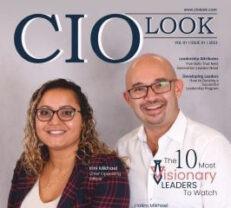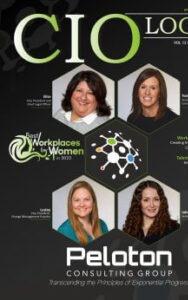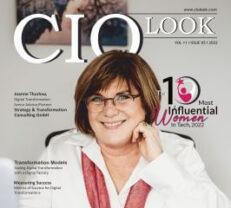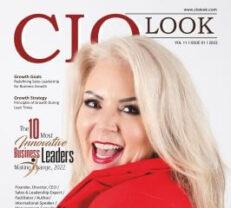CO NT EN TS
18. 22.
C O V E R S T O R Y
Richard Larson’s
Lifelong Journey Through Research, Education, Innovation, and the Power of Learning
A R T I C L E S
Learning Without Limits: The Rise of Personalized Education on the World Stage
The Green Classroom: How Sustainability is Shaping Education Globally
Pooja M Bansal Editor-in-Chief
CONTENT
Deputy Editor Anish Miller
Managing Editor Prince Bolton
DESIGN
Visualizer Dave Bates
Art & Design Director Davis Mar�n
Associate Designer Jameson Carl
SALES
Senior Sales Manager Fa�ma A.
Manager- Media Partnerships Amira A
Customer Success Manager Nelson M. Sales Execu�ves Tim, Smith
TECHNICAL
Technical Head Peter Hayden
Technical Consultant Victor Collins
Research Analyst Eric Smith
SEO Execu�ve Alen Spencer
www facebook.com/CIOLookMedia
h�ps://x.com/CIOLookmedia
Email info@ciolook com
For Subscrip�on www.ciolookmedia.com CONTACTUSON
Copyright © 2025 CIOLOOK, All rights reserved. The content and images used in this magazine should not be reproduced or transmi�ed in any form or by any means, electronic, mechanical, photocopying, recording or otherwise, without prior permission from CIOLOOK. Reprint rights remain solely with CIOLOOK. FOLLOWUSON WE ARE ALSO AVAILABLE ON
Richard Larson
Richard shows no signs of slowing down intellectually. He remains deeply engaged in tracking educational and technological trends, especially the rise of Articial Intelligence.
RichardLarsonstandsasabeaconoflifelong learning,embodyingtheenduringbeliefthat knowledgeisthemostempoweringandenduring possessionapersoncanacquire.Hisjourneythrough academia,research,andinnovationspansdecadesand disciplines,leavingaprofoundimpactonthefieldsof operationsresearch,queueingtheory,andeducation systems.
FromhisearlydaysattheMassachusettsInstituteof Technology(MIT)tohiscurrentroleasanauthorand advocateformodel-basedthinking,hiscareerhas consistentlybeendefinedbyintellectualrigor,creativity, andarelentlesscuriosity.Richard’sbeliefinthe transformativepowerofeducationhasbeenthedriving forcebehindhiswork,extendingfarbeyondtheconfinesof lecturehallsandlaboratories.
TheheartofRichard’sstoryliesnotonlyinhisscholarly contributionsbutalsoinhisenduringcommitmentto shapingminds,empoweringcommunities,andredefining howsocietyengageswithknowledge.Whethermentoring doctoralcandidates,presentingatglobalconferences,or developingframeworksthatrevolutionizeemergency servicesystems,hehasapproachedeverychallengewith purposeandpassion.Hisphilosophyoflearningstretches beyondformaleducation,encouragingindividualstoseek insightinbothstructuredmodelsandeverydayexperiences.
ForRichard,eachdiscovery—nomatterhowsmall—has value,andeachinteractionisanopportunitytoexpand understanding.Hislifeandworkareatestamenttotheidea thatlearningisnotaphasebutacontinuousjourney.Even inretirement,Richardremainsdeeplyengagedinpublic
discourseandeducation,focusingonmakingcomplex conceptsaccessibletoabroadaudience.
Throughhiswriting,speaking,andpublicengagement,he advocatesformodel-basedthinkingasapracticaltoolfor solvingreal-worldproblems.Richard’scareerservesas botharoadmapandaninspirationtothosewhobelievein thepowerofknowledgetoilluminatepathsforward,foster innovation,andenhancethehumanexperience.
MITBeginningsandAcademicGrowth
Richard’sacademicrootstracebacktoapivotalmomentin hisyouth:beingacceptedintotheMassachusettsInstituteof Technologyatjust18yearsold.ComingfromNeedham HighSchool,heenteredaworldofintellectualchallenge andlimitlessopportunity.Hisinitialjourneywasshapedby anunassumingdesiretominimizetuitioncoststhrough commuting,apathhisfatherpreferred.
YetdestinyhadotherplanswhenRichardjoinedthePhi BetaEpsilon(PBE)fraternity,uniquelysituatedonMIT's MemorialDrivecampus.Thisfraternitywouldnotonly offerhimaplacetostaybutalsoserveasanurturing groundforfriendship,collaboration,andpersonalgrowth.
ImmersedinthevibrantacademiccultureofMIT,Richard's passionfordiscoveryquicklyevolved.Hisundergraduate experience,filledwithintellectualstimulationandtight-knit communitysupport,ledhimtocontinueatMITfor graduatestudiesinoperationsresearch.Bythetimehewas completinghisdissertation,anunexpectedofferfromhis advisor,ProfessorAlvinW.Drake,changedthecourseof hislife.Despiteinitialdoubtsabouttransitioningfrom
While Richard’s roots are rmly planted in academia, his contributions extend far beyond the university setting.
Richard cultivated an atmosphere of intellectual curiosity and creative problem-solving.
studenttofaculty—whatheaffectionatelycallsthe “GrouchoMarxsyndrome”—Richardacceptedtheposition ofAssistantProfessor.Overtime,hisroledeepened, eventuallyculminatinginatenuredprofessorshipanda legacyofimpactfulmentorship.
MITnotonlyshapedRichard’sintellectbutalsocultivated hisconfidenceasaresearcherandteacher.Theinstitution servedasbothincubatorandlaunchpad,enablinghimto explore,fail,succeed,andultimatelyredefineacademic excellence.HisexperiencesatMITunderscoredthe importanceofcommunity,mentorship,and resilience—valuesthatwoulddefinehisdecades-long career
TeachingasaTransformativeExperience
Amongallhisprofessionalendeavors,Richardconsistently foundthemostprofoundfulfillmentinteaching.Beyond standinginfrontofaclassroom,itwastheintimate, collaborativerelationshipshedevelopedwithhisstudents thattrulyshapedhislegacy Tohim,educationwasn’tabout simplydeliveringlectures—itwasaboutguidingstudents throughcomplexideas,encouragingthemtoquestion assumptions,andnurturingthenextgenerationof innovators.Hismostrewardingexperiencescamenotfrom accoladesorawards,butfromwitnessingtheevolutionof hisstudentsastheygrewintoinfluentialthinkers, researchers,andleaders.
Inmentoringgraduatestudents,Richardcultivatedan atmosphereofintellectualcuriosityandcreativeproblemsolving.Manyofthesecollaborationsledtopublished researchinprestigiousjournals,cementinghisstatusnot onlyasaneducatorbutalsoasathoughtleader Yet,more thantheacademicprestige,whatmatteredmosttohimwas seeinghisstudentsthrive—takingwhattheylearnedand applyingitmeaningfullyintheworld.Thesewerethe momentsthatreaffirmedhisbeliefineducationasa transformativeforce—onecapableofempoweringminds andadvancingsociety.
Evenaftersteppingawayfromactiveteaching,Richard continuestoinfluenceeducationthroughhiswritingand publicspeaking.Heremainscommittedtosharing knowledge,drivenbyabeliefthateducatorshavea responsibilitynotjusttoteach,buttoinspire.Hisapproach toteaching,characterizedbyempathy,rigor,and enthusiasm,hasimpactedcountlesslivesandwillcontinue toresonateforyearstocome.
ExtendingtheImpactBeyondAcademia
WhileRichard’srootsarefirmlyplantedinacademia,his contributionsextendfarbeyondtheuniversitysetting.A trueadvocateforeducationalequity,hehasworked tirelesslytoensurethathigh-qualitylearningresourcesare accessibletostudentsfromallbackgrounds.Through initiativessuchastheMITBLOSSOMSproject—aglobal video-basedlearningprogram—heandhislatewife,Mary ElizabethMurray("Liz"),soughttodemocratizeeducation. Theirsharedmissionwastoreachstudentsinunderserved communities,providingthemwiththetoolstounlocktheir potential.
Thisdedicationtoeducationalsomanifestedthrough institutionallegacy-building.Asatestamenttohis commitmenttoknowledgeandinnovation,Richard endowedtheRichardChairinMIT’sInstituteforData, Systems,andSociety Thisfacultychairsupportsongoing researchandteachinginareasthataligncloselywithhis life’swork—operationsresearch,systemdynamics,and publicpolicy Theendowmentservesasabeaconforfuture scholars,ensuringthathispassionformeaningfulinquiry willcontinuetoshapeacademicthoughtforgenerationsto come.
Richard'sconsultingworkwithENFORTHCorp.andhis engagementwithschoolslikeNotreDameCristoReyHigh Schoolfurthershowcasehismultifacetedapproachto makingeducationacatalystforsocialchange.Whether throughphilanthropy,policyadvising,orgrassroots-level involvement,hehasalwaysviewedknowledgeasa communalresource—somethingtobesharedwidelyand usedforthegreatergood.
TurningChallengesintoGrowth
Everycareerismarkedbyitsshareoftrials,andRichard’s pathwasnodifferent.Oneofhismosthumblingmoments cameearlyinhisgraduatecareerwhileservingasa TeachingAssistant.Confrontedwithastudentquestion duringalecture,hefoundhimselfunabletoexplainan equationhehadjustwritten.Thismoment,thoughdeeply uncomfortable,becameaturningpoint.Fromthenon, Richardresolvednevertostepintoaclassroomwithout beingfullyprepared.
Thisincidentsparkedalifelongcommitmenttoexcellence inteachingandcommunication.Itremindedhimthat masteryisnotonlyabouthavingknowledgebutbeingable
toconveyitclearlyandconfidently.Hismeticulous approachtoteachingthereafternotonlymadehimamore effectiveeducatorbutalsoinstilledadisciplinethatwould definehisresearchandwriting.Heturnedwhatcouldhave beenamomentofdefeatintoacornerstoneofhis professionalethos.
Bysharingsuchpersonalchallenges,Richardcontinuesto inspireotherstoembracesetbacksaslearningopportunities. Hebelievesthatresilience,preparation,andhumilityare essentialtraitsforanyonestrivingtomakeameaningful impactineducationorresearch.
LegacyofLoveandPartnership
IntegraltoRichard’sremarkablejourneywastheenduring partnershiphesharedwithhislatewife,Liz.Their43-year marriagewasbuiltonmutualrespect,sharedintellectual curiosity,andadeepcommitmenttoeducation.Lizplayed anessentialrolenotonlyinRichard’spersonallifebutalso inhisprofessionalachievements.AsManageroftheMIT BLOSSOMSprogram,shecollaboratedcloselywithhimto expandeducationalaccessworldwide.Together,they traveledextensively,engagingwithdiverseaudiencesand sharingtheirpassionforteaching.
Richard shows no signs of slowing down intellectually. He remains deeply engaged in tracking educational and technological trends, especially the rise of Articial Intelligence.
Theirbondwasstrengthenedbyashared mission—improvinglivesthrougheducation.Whether addressinghundredsinSaudiArabiaorcoordinating logisticsforeducationalvideoproduction,Lizwasavital forceineveryinitiativetheypursued.Shealsobroughther talentstoENFORTHCorp.,helpingtoensurethat Richard’sconsultingeffortsweregroundedinboth practicalityandempathy.Herpassingmarkedan irreplaceableloss,butherinfluencecontinuestobefelt throughthelivesshetouchedandtheworktheybuilt together
FamilywasalwayscentraltoRichard'slife.HeandLiz raisedthreechildren,whohavesincebroughtfour grandchildrenintothefamily Theserelationshipsremaina sourceofjoyandstrength,reinforcinghisbeliefin nurturingbothpersonalandprofessionalcommunitieswith careandcommitment.
Model-BasedThinkingandPublicEducation
Inrecentyears,Richardhasturnedhisattentionto promotingMODEL-BasedThinking—apractical frameworkdesignedtohelpindividualsmakebetter decisionsineverydaylife.Hisbook, MODEL THINKING For Everyday Life,distillsdecadesofacademicinsightinto adigestibleguidefornon-specialists.Itemphasizesthe importanceofusingstructuredmodelstounderstand complexity,anticipateconsequences,andsolvereal-world problemswithclarity
Richard’sgoalistobringtheseideastothepublicsphere, reachingpeopleoutsidetraditionalacademicchannels. Throughradiointerviews,speakingengagements,and communityevents,hesharesthemessagethatconceptual modelsaren’tjusttoolsforscientists—they’reessentialfor
anyonenavigatingtoday’sinformation-richworld.From budgetingathometopolicy-makingatthenationallevel, model-basedthinkingcanofferclarityinanotherwise chaoticlandscape.
Hisadvocacyforbroaderpublicunderstandingreflectsa deepcommitmenttoknowledgedemocratization.He believesthatwiththerighttools,everyonecanbecomea betterthinker,amoreeffectiveproblem-solver,andamore responsiblecitizen.
Future-OrientedandEver-Curious
Althoughtechnicallyretired,Richardshowsnosignsof slowingdownintellectually.Heremainsdeeplyengagedin trackingeducationalandtechnologicaltrends,especially theriseofArtificialIntelligence.Heiscautiouslyoptimistic aboutAI’spotentialinacademia,notingitsabilityto enhancelearningwhilealsoposingchallengestoacademic integrityanddeepengagement.Hecallsoneducatorsto approachAIthoughtfully,ensuringitcomplementsrather thancompromiseseducationalgoals.
Hiscurrentmission—tomakestructuredthinking mainstream—blendshispassionforsystemsanalysiswitha desiretoempowereverydaycitizens.Byfostering analyticalhabitsinabroadpopulation,hehopestobuilda moreinformed,curious,andcapablesociety
Attheheartofallhisendeavorsliesasimpleyetprofound principle:thebeliefthatlearningisforeveryone,atevery stageoflife.Richard'sstoryisalivingexampleofhow intellectualpassion,whencombinedwithpurposeand empathy,canleavealastinglegacyonbothindividuallives andglobalsystems.
The Rise of Personalized Education on the World Stage
Thetraditionalclassroom—rowsofdesks,aone-sizefits-allcurriculum,andstandardizedassessments—is fast becoming a relic of the past.Around the world, educatorsandpolicymakersarereimagininglearningthrough a different lens: one that’s flexible, student-centered, and deeply personal. Personalized education is not just an educationaltrend—it’saglobalmovementreshapinghowwe teach,howstudentslearn,andhowwedefinesuccess.
At the heart of this transformation is a simple yet powerful idea:everylearnerisunique.Theirinterests,pace,strengths, challenges, and aspirations vary So why should education remainuniform?
Personalized education replaces rigid systems with responsiveframeworks,empoweringstudentstotakegreater ownership of their learning while giving teachers the tools andinsightstoguidethemmoreeffectively Andasthismodel takes root across continents, it’s redefining what it means to learn—withoutlimits.
Technology:TheEnabler,NottheDriver
Technology has played a pivotal role in accelerating personalized learning.With the rise of artificial intelligence, adaptive learning platforms, real-time analytics, and cloudbased content delivery, it is now possible to offer individualized pathways at scale Students can revisit concepts they haven’t mastered, explore topics that intrigue them,andlearnatapacethatsuitstheircognitiverhythm.
Yet, technology is not the essence of personalized education—it’stheenabler Thetruedriverisaphilosophical shift: a reorientation of systems and classrooms around the learner It’s about moving from mass production to customization, from compliance to curiosity, and from instructiontoexploration.
Globally, this shift is being embraced not just in high-tech private schools, but also in forward-thinking public systems and emerging-market classrooms. Whether through digital platformsorhuman-centeredstrategies,thegoalisthesame: to meet learners where they are and take them further than everbefore.
TheGlobalPicture:OneGoal,ManyModels
From Finland to Singapore, New Zealand to Rwanda, countriesareembracingthepersonalizedlearningmovement inculturallyuniqueways.
InFinland,flexiblecurriculaandteacherautonomyallowfor holistic,student-drivenlearningplans.
Singapore integrates data analytics to support differentiated instruction and early intervention. These models reveal that personalizationisnotconfinedtowealthorgeography—it’sa mindset shift that can be tailored to local needs and scaled withtherightleadership.
Educators:DesignersofDynamicJourneys
Inthisnewparadigm,teachersarenolongerjustknowledge deliverers—theyarelearningarchitects.Theycuratecontent, analyze learning patterns, mentor students, and foster an environment where every child’s needs are recognized and respected.
Personalized education doesn’t reduce the teacher’s role; it elevatesandexpandsit.Withaccesstotoolsthatofferinsight intoeachlearner’sprogress,teacherscanmakesmarter,more empathetic decisions.They can group students dynamically, offer real-time feedback, and prioritize relationships over rigidinstruction.
For this to work, however, educators need support: ongoing professionaldevelopment,freedomtoinnovate,andsystems thatvaluecreativityandconnectionovercompliance.
StudentAgency:TheNewCurrencyofSuccess
Perhaps the most profound shift is how personalized educationempowersstudentstobecomeactiveparticipantsin theirownlearning.Nolongerpassiverecipients,learnersare encouraged to set goals, track their progress, and pursue projectsthatmattertothem.
This builds more than academic achievement—it fosters lifelong learners with critical thinking, self-awareness, and intrinsic motivation. These are the traits needed not just for exams,butforanunpredictable,fast-changingworld.
When students experience agency, relevance, and choice, education becomes a journey of discovery and selfdevelopment,notjustcertification.
ThePromiseofaPersonalizedFuture
As the world grapples with rapid change from AI disruptions to climate uncertainty—education must become more agile, inclusive, and human. Personalized education offers a compelling pathway forward. It honors diversity, celebratespotential,andpreparesstudentsnotjusttosurvive thefuture,buttoshapeit.
ImagineaworldwherearuralchildinUgandacanaccessthe same quality of instruction and mentorship as a student in TokyoorToronto.Whereeverylearnerfeelsseen,valued,and empowered. Where education doesn’t end in the classroom, butflowsseamlesslyintolife,work,andcommunity.
That’stheworldpersonalizededucationisbuilding—aworld wherelearningknowsnolimits.
How Sustainability is Shaping Education Globally
In a world facing unprecedented environmental challenges, education has emerged as a pivotal force in shaping how future generations respond to the climate crisis. From reimagining curricula to redesigning school infrastructure, sustainability is no longer a peripheral topic—it’s becoming the coreofhowlearningisstructured,delivered,andmeasured.The rise of the "green classroom" reflects this shift: a global movement that integrates ecological awareness, sustainable practices,andclimateliteracyintotheheartofeducation.
FromAwarenesstoAction:WhyGreenEducationMatters
The urgency of climate change, deforestation, pollution, and resource depletion has never been clearer However, knowledge aloneisnotenough.Educatorsaroundtheworldareincreasingly moving beyond traditional environmental studies to embed sustainabilityintoeverysubjectarea—frommathandscienceto literature and the arts. This holistic integration helps students understand the interconnectedness of global systems and the impact of human choices, fostering a mindset that prioritizes stewardship,responsibility,andinnovation.
UNESCO and other international education bodies have emphasizedEducationforSustainableDevelopment(ESD)asa key strategy in meeting the Sustainable Development Goals (SDGs), particularly SDG 4 (quality education) and SDG 13 (climateaction).Thegreenclassroomisnotjustaphysicalspace, butaphilosophythatprepareslearnerstothriveinaworldwhere sustainabilityisnolongeroptional,butessential.
SustainableInfrastructure:LearninginEco-FriendlySpaces
Thetransformationbeginswiththephysicalenvironment.Across continents, educational institutions are investing in eco-friendly infrastructure solar-powered schools, buildings constructed from sustainable materials, rainwater harvesting systems, zerowastecampuses,andenergy-efficientclassrooms.
These environments not only reduce the institution’s carbon footprintbutalsoserveasreal-lifelaboratoriesforstudentsto observeandparticipateinsustainablepractices.
For example, in Scandinavian countries, green building standards are integrated into school designs, emphasizing natural light, renewable energy sources, and indoor air quality. In developing nations, modular solar-powered classroomsarebeingintroducedinremoteregions,enabling off-grideducationwhilepromotingcleanenergy.
These “living classrooms” blur the boundary between the built environment and the curriculum, encouraging students toconnecttheorywithpractice.
Curriculum Innovation: Teaching Sustainability Across Subjects
The integration of sustainability into pedagogy goes far beyond science lessons on climate change In a green classroom, history might explore the environmental consequences of industrialization; language arts could include literature on nature and ecological ethics; and mathematics might use data sets from real-world environmentalstudies.
In Finland, one of the global leaders in educational innovation,schoolsemployinterdisciplinaryapproachesthat tiesustainabilitytoreal-worldchallenges.Similarly,schools inIndia,SouthKorea,andSouthAfricaareadoptingprojectbased learning methods where students tackle local environmental problems planting trees, organizing recycling initiatives, or designing clean water solutions—as partoftheiracademicexperience.
These hands-on learning models foster critical thinking, collaboration,andsystemsthinking—allkeycompetenciesin sustainableliving.
EmpoweringTeachersandCommunities
Thegreenclassroomisn’tpossiblewithouteducatorswhoare well-equipped to guide this shift Teacher training and continuous professional development are increasingly focused on sustainability education In countries like Germany andAustralia, new certification programs for ecoeducatorsareemerging,ensuringthatsustainabilityisnotan afterthoughtbutabuilt-inpedagogicallens.
Additionally, sustainability in education extends beyond students and teachers to engage families and communities. Schools are forming green committees, collaborating with local NGOs, and initiating community gardens, turning educational institutions into local sustainability hubs. This creates a ripple effect where sustainability becomes embedded not only in school policy but also in community normsandeverydaybehaviors.
TechnologyasaGreenEnabler
EdTech is playing a critical role in making sustainability educationmoreaccessibleandengaging.Digitalsimulations, virtualfieldtripstocoralreefsorrainforests,andAI-powered sustainability modules are enabling students—regardless of geography to interact with complex environmental systems.Platformsthatmonitorschoolenergyusageorfood wasteinreal-timealsohelpstudentsunderstandthetangible effectsofhumanconsumption.
Moreover, by replacing textbooks with tablets or adopting remotelearningmodels,schoolscanreducepaperuse,energy consumption, and travel-related emissions. However, this requires careful balancing to ensure digital equity and responsiblee-wastemanagement.
ThePathAhead
The green classroom is not a trend—it’s a transformation. It redefines the role of education from simply transmitting knowledgetoshapingmindsets,behaviors,andsystems.It’s about preparing learners to think critically, act responsibly, and innovate boldly in a world that desperately needs solutions.
As nations strive toward climate resilience and sustainable development, education must be at the forefront By reimagining what it means to teach and learn, the green classroom offers a vision of hope—one where knowledge fuelschange,classroomsbecomeecosystemsofgrowth,and everystudentbecomesastewardoftheplanet.
